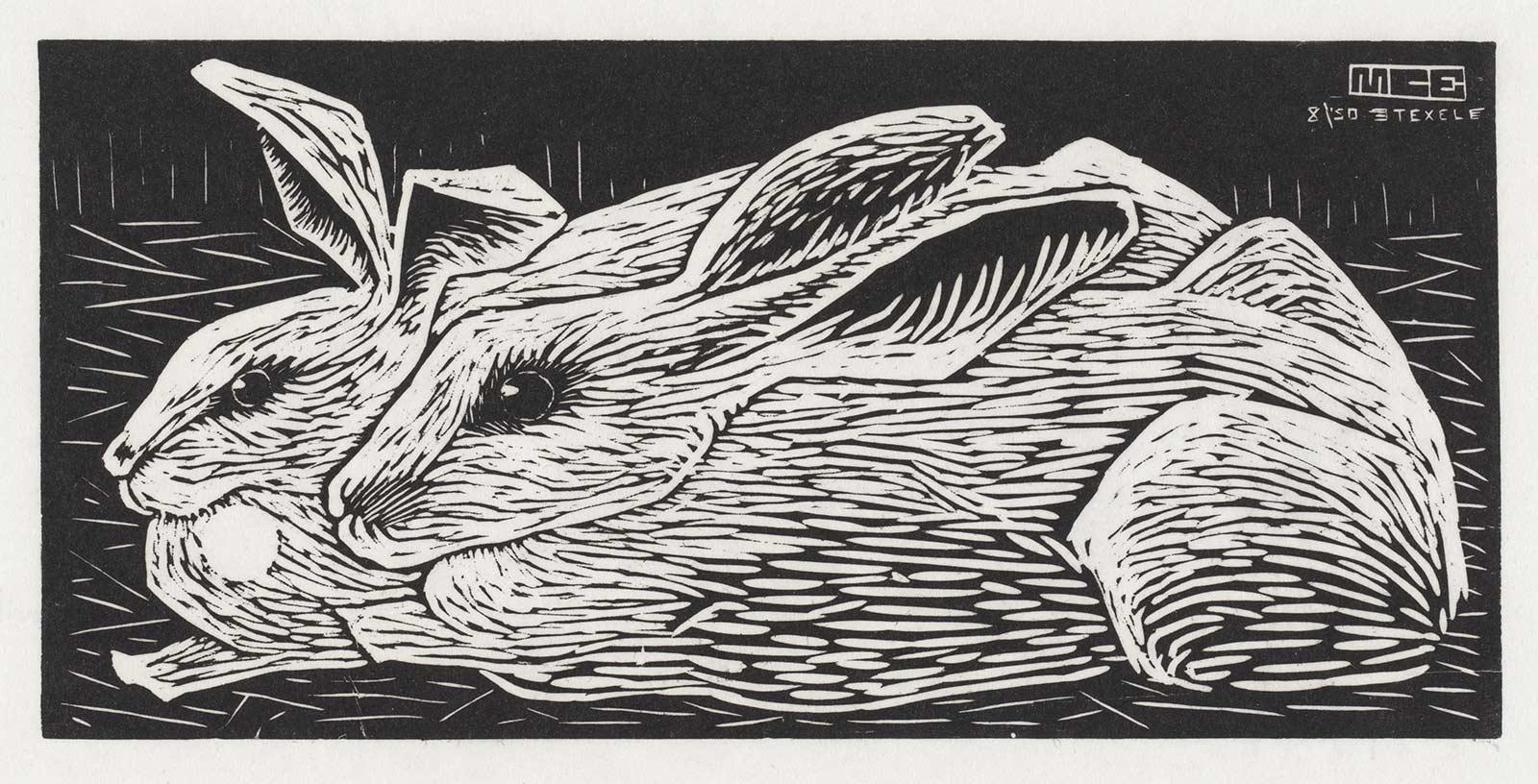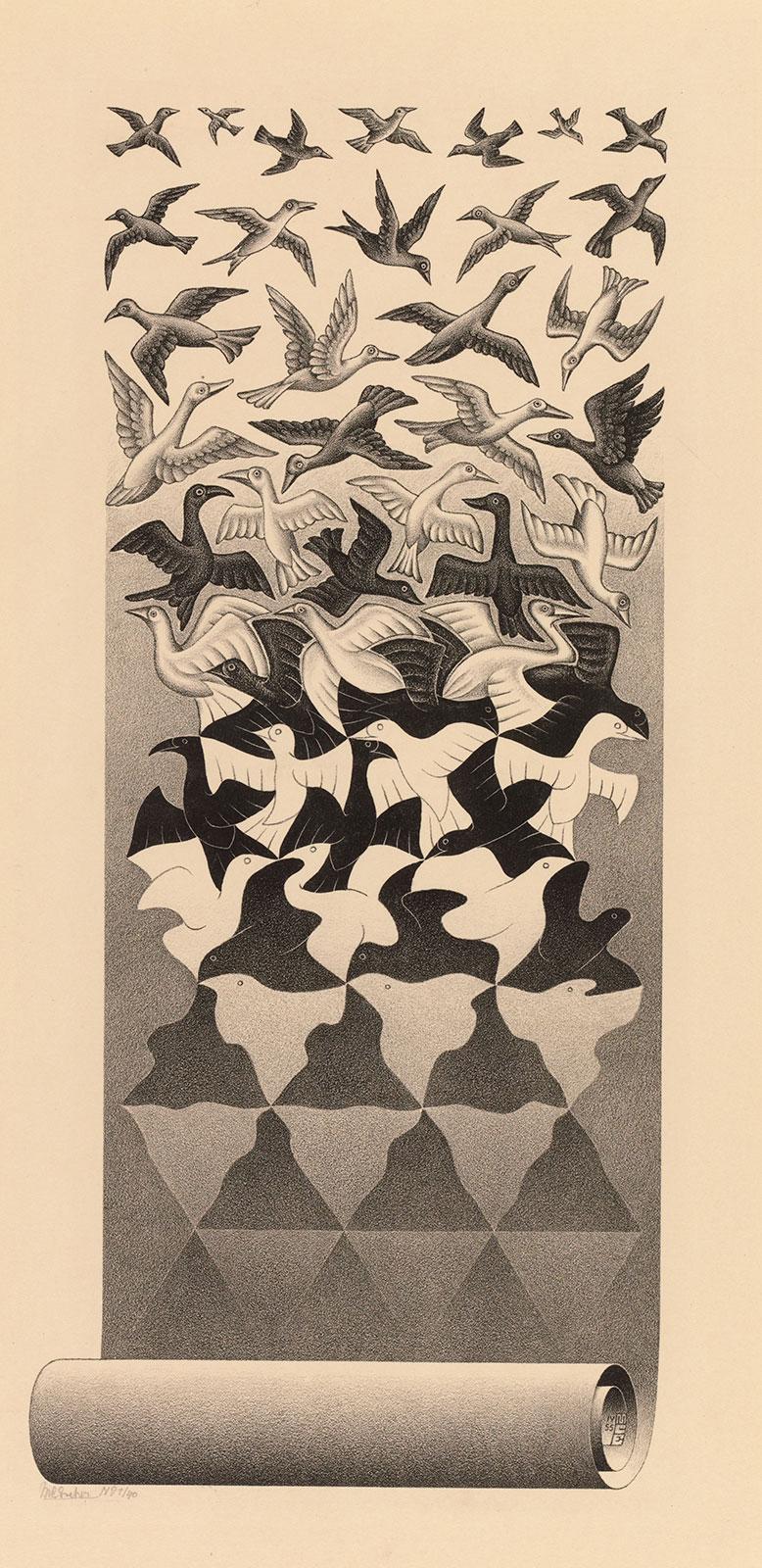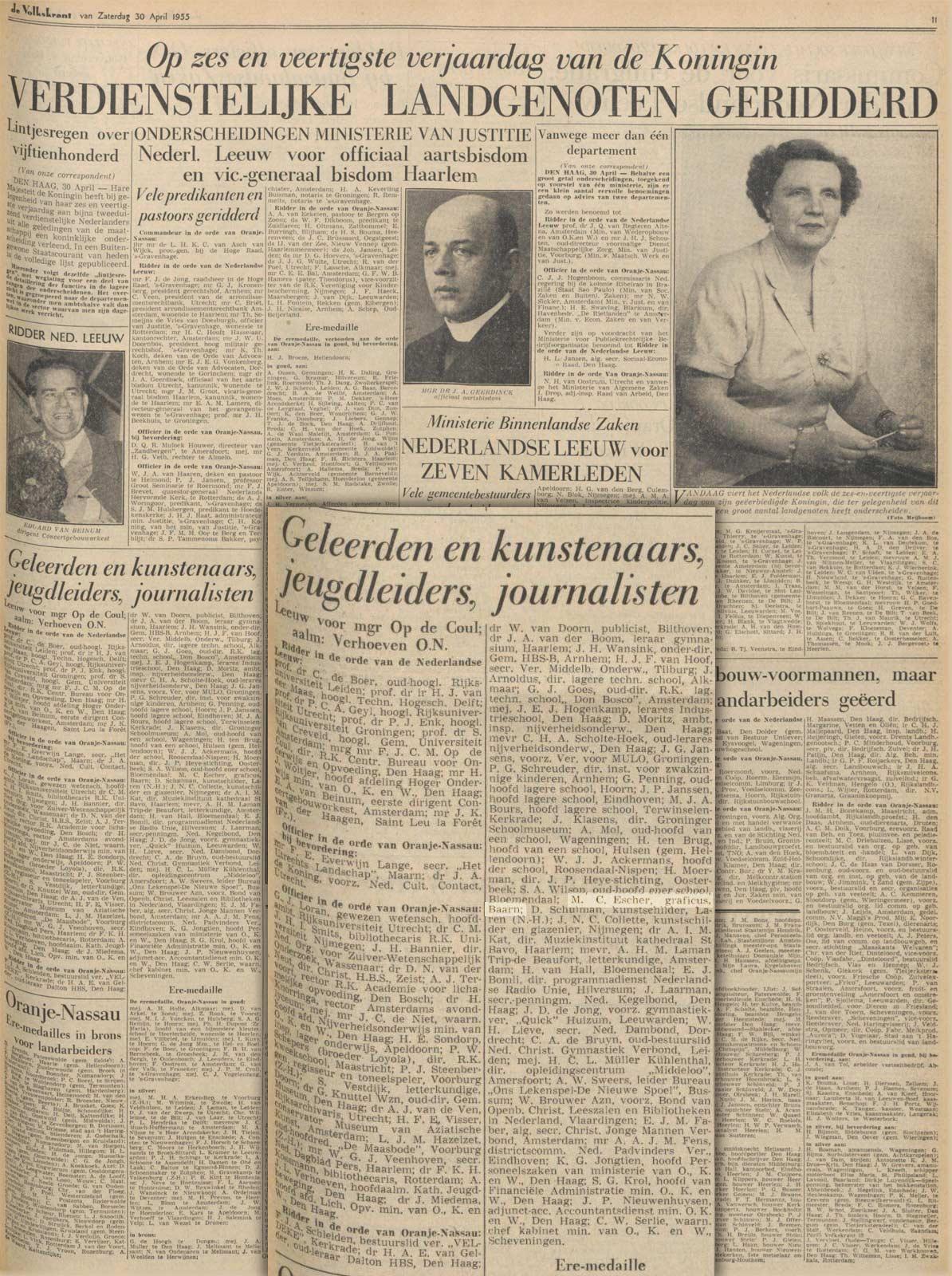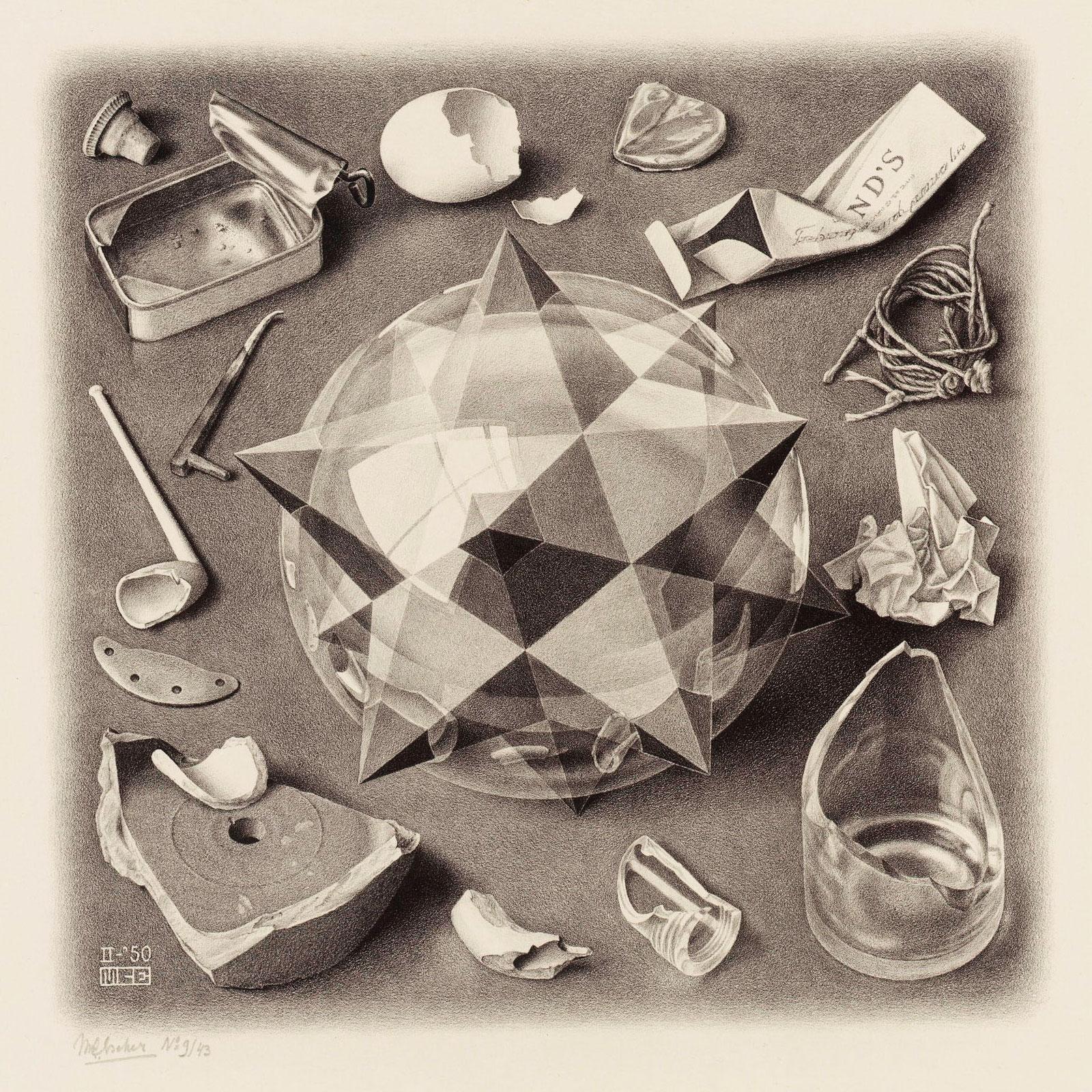

On 28 April 1955, Escher was working in his studio when an alderman and the municipal secretary of the city of Baarn arrived at his doorstep unexpectedly.* What he was working on at that precise moment is not clear. It could be reprints of his existing work, e.g. his four-metre-long Metamorphosis II, which was in high demand. Or his lithograph Liberation, which he had been commissioned to produce for the 10th Liberation Day on 5 May of that year. The alderman and the secretary told him that the queen intended to appoint him as a Knight in the Order of Orange-Nassau.

Still perplexed by this event, Escher wrote to his son Arthur on the 1st of May:
'Three days ago, the Municipal Secretary announced to me that the alderman (Mr Ros) would be paying me a visit the following morning. In view of the warm weather and how busy I was, I was not exactly in my Sunday best, and was instead busy carving in my old corduroy trousers and shirt sleeves when Mr Ros entered my studio with the secretary. I had no idea what the purpose of their visit was. Maybe, I thought, they want to buy a picture from me to decorate a wall of the town hall, or maybe I will have to carry out an assignment for the local authority. I put on my old jacket and said, after shaking hands: “Please take a seat, gentlemen”. “No”, Mr Ros said, “we would prefer to keep standing for a while”. And he began to tell me that to his regret the mayor was not feeling well and that he, Ros, was acting as deputy mayor and was here in his stead. I thought to myself: why does he need to tell me this standing up and said again: “sit down now, gentlemen”. “No”, said Ros again, “we do have to stand still for a while”. I did not get it at all. Did he perhaps have a boil on his bottom?
Then the reason for their visit was revealed: he had the honour of offering me a knighthood on behalf of our respected queen. I watched in astonishment as he brought out a beautiful orange sheath (is that the name for such a box?), from which a silver, enamel-encrusted cross emerged. He made some unsuccessful attempts to pin this bulky object on my chest, but he was too nervous or the safety pin would not pierce my lapel. Anyway, your dad is a knight, albeit not a knight of the Order of the Garter. How on earth they decided to give me this award is and will remain a mystery. I just hope it is not a mistake. In the evening my name was mentioned in the newspaper as one of the many thousands who receive a ribbon every year in honour of the Queen’s birthday. By the way, this knighthood is not that important. Together with me, Vestdijk received the officer award of the same order; that is a full class higher. And Van Beinum, the conductor of the famous Amsterdam orchestra, became a Knight in the Order of the Dutch Lion, which is even grander.'
Incidentally, Escher did have mixed feelings about receiving this honour:
'But the point is: did you ever think your dad—who is so far removed from the tumultuous, intriguing world and works on his prints like a hermit every day—would someday be dragged into this nauseating battlefield of vain bureaucracy? There is, however, one thing they will never get me to do, namely to wear a ribbon in my buttonhole. When I occasionally travel second class by train (there is also a third class), when I am tired, I sometimes see those important gentlemen sitting there with such a symbol of distinction and their affected attitude and their smiles, which express a mixture of courtesy and condescension, clearly set them apart them from the sad, anonymous masses with their empty buttonholes. But what should I do? Fortunately, I can swear to God and his angels that I never strove for it and never sucked up to anyone in a position of power.'**


Ranking the artist
The award was, of course, an honour. Yet it is also striking that other artists were rated more ‘highly’ — a fact Escher himself pointed out too in his remarks about Van Beinum and Vestdijk. For example, actor Paul Steenbergen also received the officer award, as well as a former director of the Gemeentemuseum, a curator and a whole host of school principals and rectors. At the time, Escher did not yet have the status he was to acquire over the course of the 1960s. He had just penetrated the United States market and overseas demand for his work had exploded. But it would be a while before he was a widely recognised artist. In addition, he was still developing himself and, like many journalists and critics, wondered if he was actually producing art at all. Although that doubt would remain with him until his death (see the interview with Vrij Nederland in 1968, for instance), his status as an artist continued to grow. This would lead to major exhibitions and ultimately to renewed royal recognition, with him being appointed Officer in the Order of Orange-Nassau in 1967.
Source
[*] and [**]Wim Hazeu, M.C. Escher, Een biografie, Meulenhoff, 1998, pages 361-362
More Escher today


Escher at school

